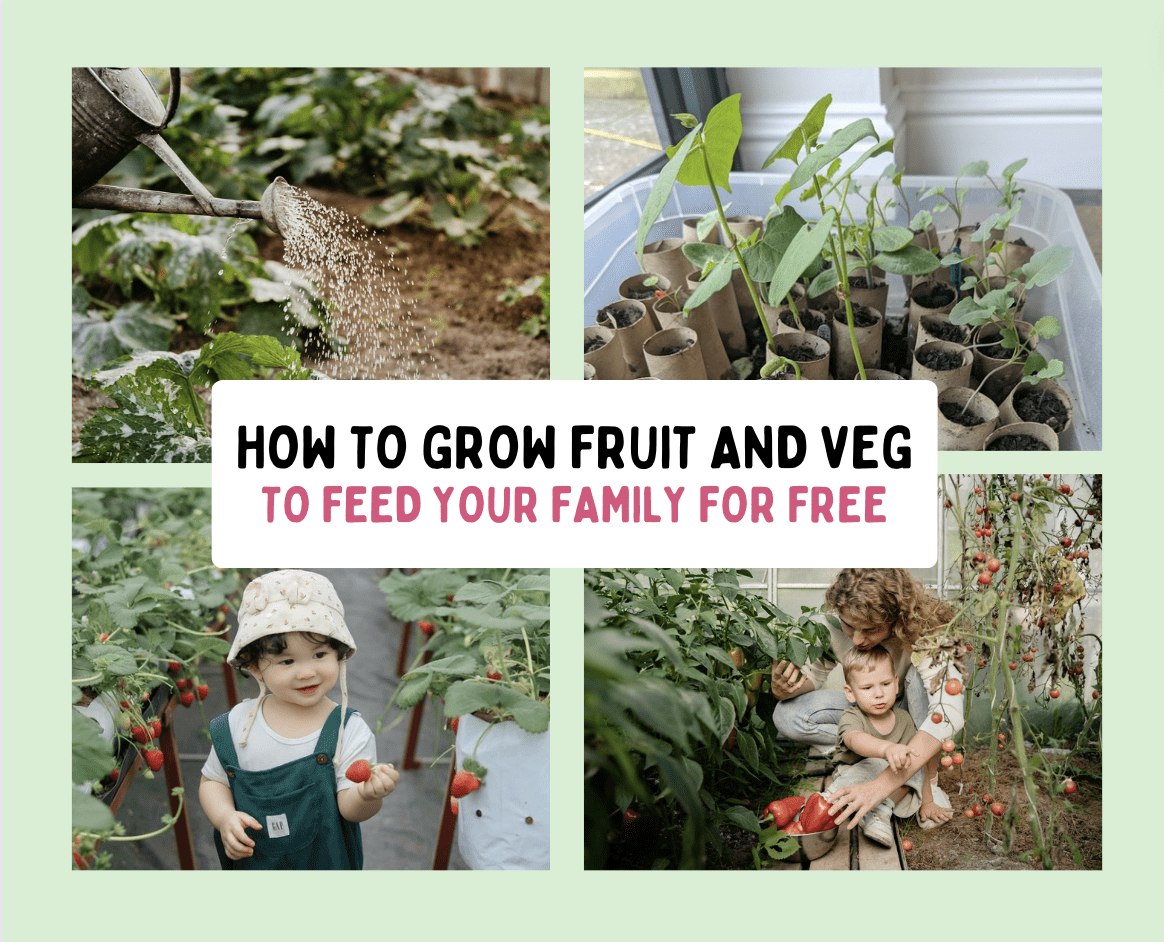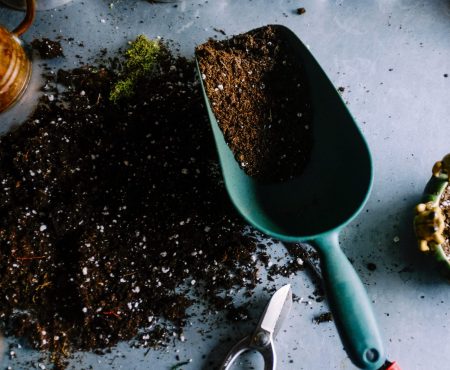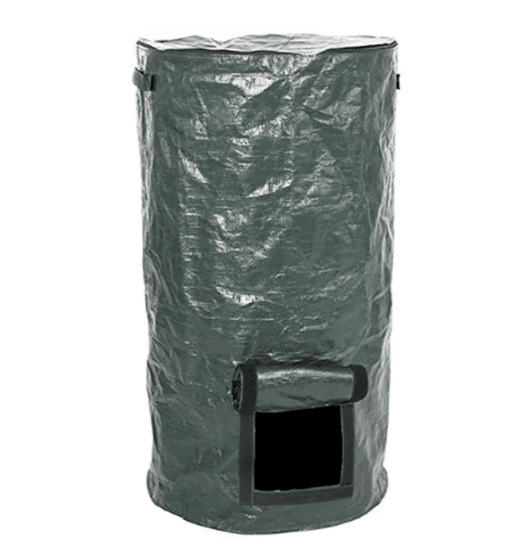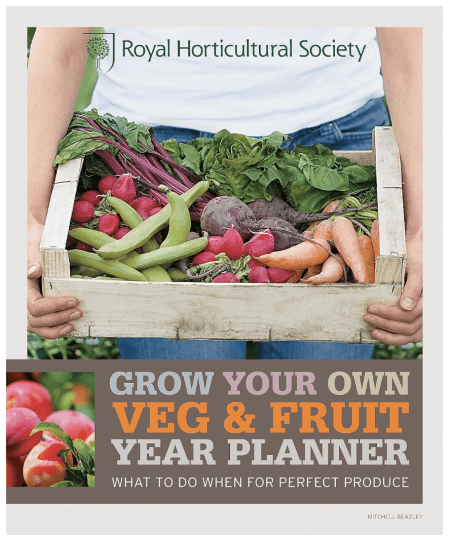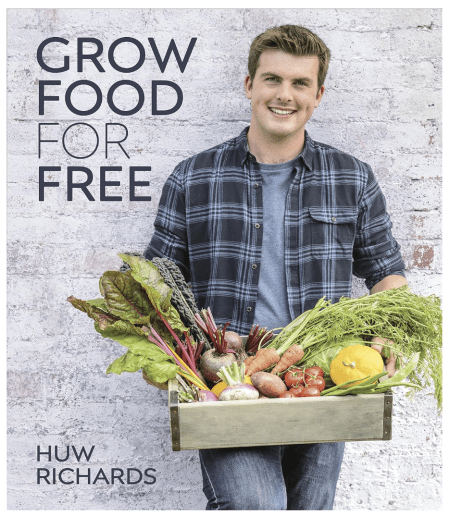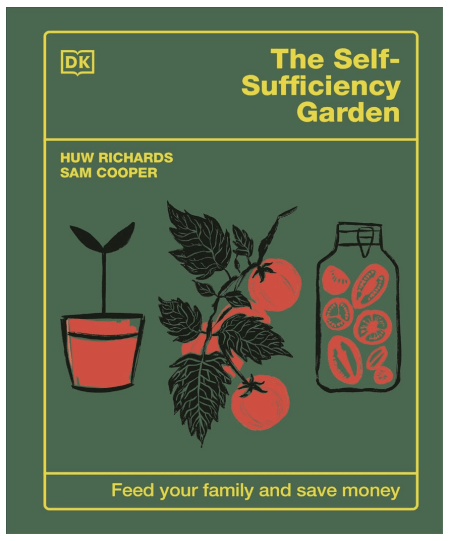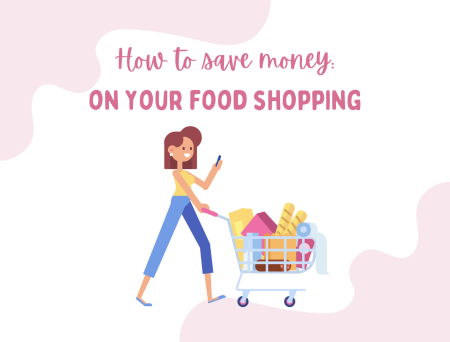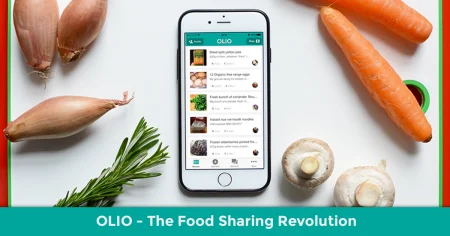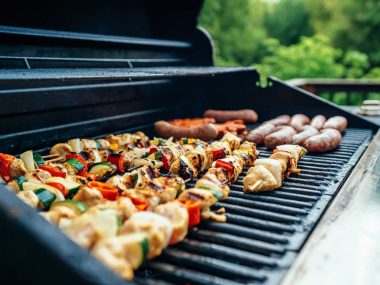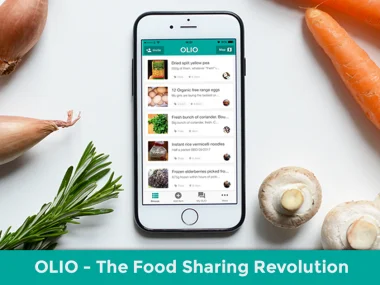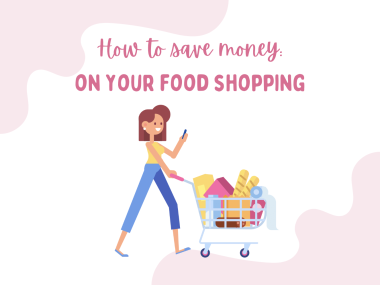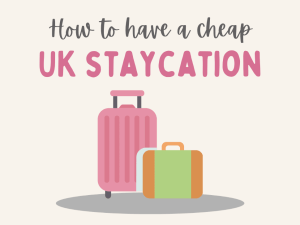This post may contain affiliate links.
Like lots of other frugal like-minded folk, we’ve decided that we need to become more self-sufficient and do some serious growing of fruit and vegetables in the garden this year. With food prices in the supermarket higher than ever, and also wanting to avoid unnecessary chemicals and packaging, we are upping our game and trying to create a bit of a kitchen garden to lessen how much we spend on food for our family of four.
I was totally inspired by Marcus Wareing’s kitchen garden TV series – I’m a keen cook too – but whilst we don’t have a huge garden like him, there’s no reason why we can’t make the most of what we’ve got. The good news is that you can grow quite a lot even in a small space or patio, especially with vertical planters that save loads of room.
To make sure that it doesn’t end up costing us more than it’ll save, we’ve focussed on getting everything we need for free or very cheaply second-hand, as well as upcycling and using things that we already had.
So here are 15 tips on how to grow your own fruit and vegetables at home to feed your family on a budget – and I’ll even give you ways that you can do it for free! From making your own fertiliser and compost, to seed swaps and DIY containers – there are loads of ways to get growing without spending a penny.
Don’t worry if you’re a beginner, hopefully this guide will help you get your garden set up and source everything you’ll need frugally. (It’s worked for me!) And, we can figure this all out together!
1. Join a local plant and seed swap:
I only discovered the ‘plant and seed swap’ world on Facebook last year and it’s just amazing – have a quick hunt and you’ll likely find a few groups local to you. Several times a year there are meet ups which kind of resemble a free boot fair – you bring offerings (like pots, seeds, or seedlings) and you can take things from other people’s tables. (Though if you’ve nothing to bring when you first start out, everyone is cool with that too!)
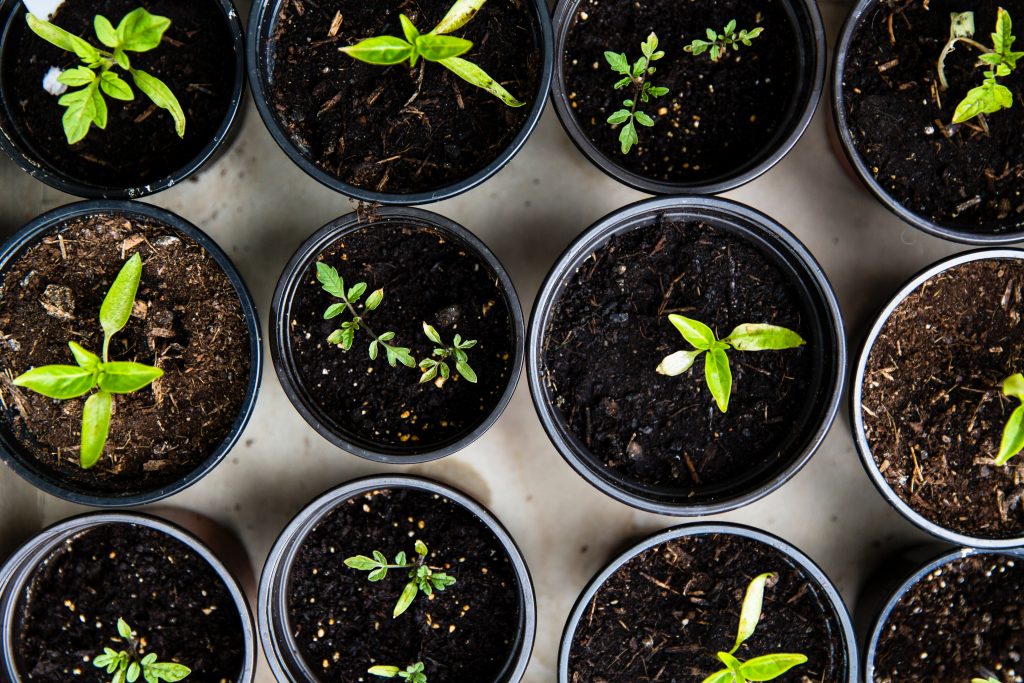
There are boxes of free seeds that you can hunt through, either spares or what people have harvested the previous year, and it’s a brilliant little community to be a part of. In between times, people will also post in the group when they’ve got manure, soil, spare pots, surplus plants etc and no-one pays a penny! We went to our first meet up the other day, and traded some of our seedlings for some seeds and pots – result!
2. Plant from seeds:
Established plants and seedlings can be really expensive, but seeds can be picked up for pennies and will go a long way. Growing your own may take longer, but they’re easy to get started – I’ve got seedlings growing in front of the back door (we haven’t got a greenhouse) and it works brilliantly – any warm window sill or conservatory will do too.
Starting them off indoors in March / April, ready to plant out later, can often make the seedlings do a bit better – a little TLC can go a long way and make the plants happier and healthier before they’re transferred outside into the garden. You can pick up seeds for just 49p a packet from The Range – all of my seeds are from there, or ones that I got for free from the seed swap.
3. Be creative with your containers:
Use the recycling to start the seedlings off
I’ve started my seeds off in cardboard toilet roll tubes – and they can even be planted directly into the ground when they’re ready if you like, as they’ll break down naturally. Some of my seedlings can’t go outside for a while, so I’ll be repotting those in things like fruit punnets and big yoghurt pots – you don’t need anything fancy at all and I’m only using things that I can get my hands on for free. The ultimate frugal gardening!
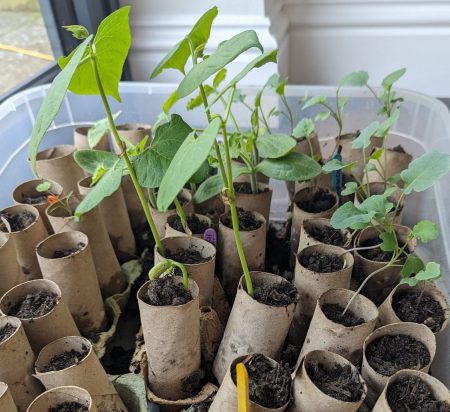
Make DIY containers for the garden
For a cheap and easy way to start growing outside just use second-hand pots – I picked up lots for free from places like Facebook Marketplace, and they’re easily freshened up with a lick of paint, if you’ve got any lurking in the shed. You can also buy grow bags really cheaply (Aldi sell 3 for £3.99) or use shopping bags, old compost bags or plastic storage boxes, and guttering works well for short rooted veg like salad.
For things like potatoes, an old bin or bucket will do. And, you could even utilise an old sink, bath tub, or even a tyre (just line it first) – you can grow fruit and vegetables in just about everything! So keep it cheap and cheerful to get set up with minimum expenditure.
Build your own planters
We made a couple of large planters with spare wood from my husband’s garden office and pallet wood for the bases. People will often give things like that away for free, so keep your eyes peeled. There are always loads of pallets available on Facebook Marketplace or local selling groups – we even made a huge pallet log store for free last year too.
You can also grow straight into the ground, but if you want to raise the soil a little then logs can simply be laid down to form the quickest, cheapest and easiest planter ever. Don’t be sucked in by Instagram, you don’t need a fancy garden to get growing, and your bank balance will thank you for rolling up your sleeves and being creative!
4. Expand your collection with gifts:
If you need some new gardening tools, fancy some strawberry plants or would love to have some pricier products like fruit trees or blueberry bushes, then why not pop them onto your birthday or Christmas list? I’ve grown my collection a lot by asking for things as gifts, and plants are the gifts that’ll keep on giving as they’ll produce year after year.
A lot of what’s in my garden hasn’t cost me a penny, and since I never know what to ask for, my family are delighted to have something to buy me! As long as you’re not buying anything too established, £5-£20 is more than enough for a new addition to the garden. I had two blueberry bushes for Christmas, so I can’t wait to eat from the garden once they start producing!
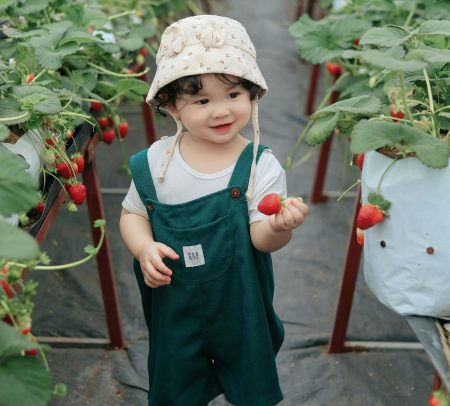
5. Make your own fertiliser:
To reduce how much compost you need, avoid chemicals and give your plants an extra boost think about making your own fertiliser. It might be that you can make something like a comfrey fertiliser – either from growing your own, or pinching it from someone else’s garden (I’ll be stealing some from my mum!) – just by soaking the leaves in water. Or, you can simply add banana peel to an old coffee jar filled with water and let it sit for 48 hours. There are lots of different fertiliser ideas that needn’t cost a penny, so get googling and tell the kids not to bin their banana skins!
6. Make the most of freebies:
Whether it be a shed, a greenhouse, planters or even soil – be patient to source what you need for free online. It might take a bit more effort, but it’s entirely possible to get set up without spending money; there will always be someone giving away something you need! We recently picked up a free water butt, and with a lick of some leftover masonry paint it’ll be as good as new. I’ve also been collecting soil to fill my planters, as buying it new is insanely costly!
If you are making planters, or upcycling bits and bobs for the garden, then look out for people giving away paint too. When springtime arrives, and people start clearing out sheds and organising their gardens, you’ll often be able to find half cans of paint for free.
7. Make your own compost:
Home composting is a great way to improve soil quality and make your plants happier. On top of this, making your own compost is a really environmentally-friendly way to make the most of your kitchen and garden waste, and you’ll avoid buying expensive bags of soil. Composting can be done all year round, whenever suitable materials are generated in the garden or home. But, the peak time for composting is late summer to early winter.
Take a look on places like Olio, Preloved and Facebook Marketplace (we got ours from Facebook) – there are usually people giving away large plastic compost bins for next to nothing, and often totally free. Here’s everything that you need to know about making your own compost…
What sort of container should I use for composting?
A open heap will still compost eventually, but the warmth and moisture retained in a bin will make better compost more quickly. A compost bin needs to exclude rain, retain some warmth, allow drainage and let in air. As I mentioned above, you can probably hunt out a free plastic one, but if you can’t find what you need second-hand, composting bags are an easy and affordable option that can be purchased for around £7 via Amazon.
Where should I place the compost container?
The best position for the compost bin seems to be debatable – I read that the micro-organisms that convert the waste into compost work best in constant conditions, so it’s best to place your compost bin in a shady area of the garden. But, I later came across another article which said that the composting process is quicker in full sun – so I think it’s probably best just put it in the most convenient spot for your garden.
If possible, try to position the container on the earth though – this allows for base drainage and the compost will benefit from the soil underneath. But you can still compost on a hard surface – just add a spadeful of soil to the compost bin.
What should I put in the compost bin?
Getting the right balance of composting materials will help it to do well. A good balance would be 25 – 50% of soft green materials (grass clippings, weeds, vegetable kitchen waste etc) and 50 – 75% of woody brown material (prunings, wood chippings, paper, cardboard, dead leaves etc). I generally do a mix of garden bits, kitchen leftovers / peelings and cardboard from the recycling bin. Avoid letting any one material dominate the heap – especially grass clippings, as these can become slimy and smelly without a good balance.
What maintenance does it need?
Air is necessary for composting to occur so turning the heap is important. The composting process is slower when less air is available. Ideally, place a lot of composting materials on the heap in one go; turning it once each month to introduce air. But, filling the heap gradually is still effective. If you see flies then make sure you cover kitchen waste with garden waste after adding it to the heap. The compost bin shouldn’t be swarming with flies.
When is the compost ready?
Garden compost can take between six months and two years to reach maturity. When it’s ready it’ll be dark brown, with a soil-like texture and a damp woodland sort of smell. Any remaining un-rotted material within the heap can be added to the next batch of composting materials. I only started my compost bin a few months ago – so I’ll let you know when I get some results!
8. Collect rainwater:
It’s important to get a free water source to make sure that your new hobby isn’t going to see your water bill rising. Hunt out a free or cheap second-hand water butt or think about collecting rainwater in other ways – it can be as simple as leaving containers, tubs or an old bin uncovered outside. Get the kids in charge of the watering – it’s an easy chore to dish out to the little ones to lighten your load, and it’s something my two will do happily (it certainly beats pairing up the socks!).
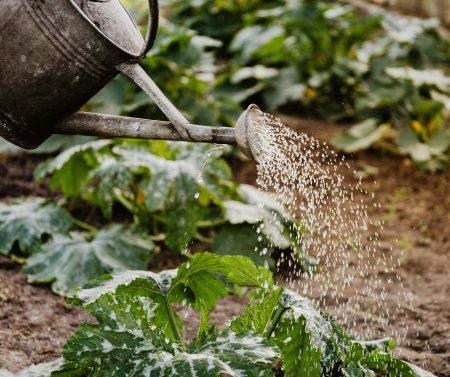
9. Pick what you grow wisely:
When you’re deciding what to plant, it’s really important that you consider a number of things before you get started, so ask yourself these questions:
What we will eat the most?
It’s pointless growing food that your family won’t eat, so think about which fruit and vegetables you enjoy the most. Think about the meals that you make frequently to grow ingredients that you can use in your cooking, and tasty treats like strawberries will usually go down well with the kids! They can grab their snacks straight from the garden!
What will save me the most money?
Compare the cost of growing vs buying, and try to consider what will save you the most money. Fruit can be very expensive, so if you can get some fruit trees going, or things like raspberry / blueberry bushes or strawberry plants, then you’ll likely see some good savings on your supermarket shop.
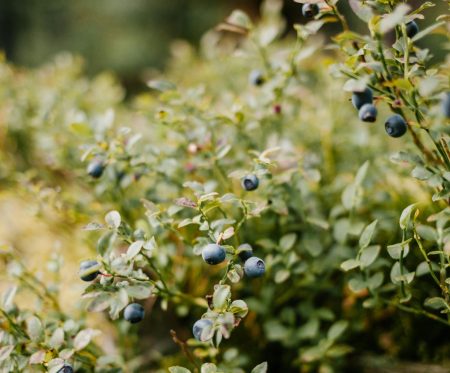
Fruit bushes and trees will produce year after year with very little effort so they’re a good investment. Similarly, if there’s a veg that you enjoy that can be a bit pricey, then get that growing over cheap produce like potatoes. (I think I’m going to grow some asparagus!) Though, if you can source what you need for free with these tips, then I think whatever you grow will be a good way to save money and reduce your food bill.
Which fruit and vegetables can be preserved or frozen easily?
If you’re going to produce more than you’ll eat during growing season, then think about how to reduce waste. Some fruit and vegetables will freeze well as they are (things like green beans and blueberries), others – for instance tomatoes – may be best cooked and made into sauces and soups before they venture into the freezer.
If you’ve got room for an extra freezer to pop in a shed or garage, then you’ll be able to keep what you grow more easily – I’m on the hunt for a second-hand one at the moment! A dehydrator can be good for herbs and fruit too, to preserve it for a long time, and dried fruit is good for kids’ snack time.
Things like apples, parsnips and potatoes can last ages for if stored correctly. And, be sure to put any fresh fruit that you want to eat during the summer season into glass jars in the fridge too, it’ll keep for much longer.
How much time will I have to spend in the garden?
Life is busy, so try to be realistic and pick low maintenance produce if you’re short on time. As I mentioned above, fruit can be a great option as it takes very little effort, and doesn’t need to be started off from seed each year. If you plant a fruit tree, you can largely just forget about it, and expect it to produce a greater yield with each year.
Growing perennial fruits, herbs and vegetables is invaluable. Most need very little maintenance and you’ll get a harvest for years to come with no more expense or work. Again, get the kids involved too – my two love being outside and the extra pairs of hands are so helpful.
What would be the best use of the space I have?
Unless you have an enormous garden, it’s useful to think about what’ll give you the most amount of produce within the least amount of space. Vegetables like broccoli can take up a lot of room for just one broccoli, as could a planter filled with parsnips, but the same space filled with vertical plants (things like like green bean and tomato plants) will give you more food. High producing fruit and vegetables can be a better use of space.
There’s also a lot that can be grown in large pots, so if you’ve not got a lot of space then patio or cordon fruit trees can be a great option, as can blueberry bushes. Most things can be container grown, so just prioritise what you’d enjoy the most if you have a small space. If you want to avoid needing planters or pots then things like raspberry bushes can be easily grown along a fence and will produce a good yield for years to come.
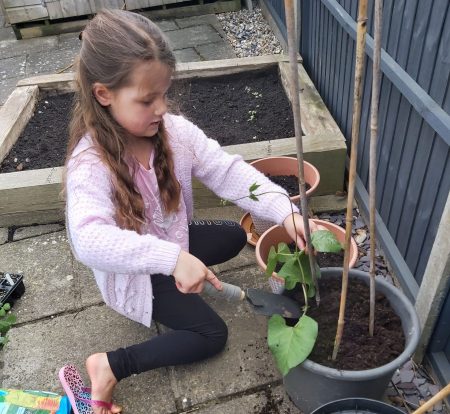
How much sunshine does it need?
Most fruit and vegetables will do well in the sunniest spot of the garden – in my garden that’s the patio so I’m doing lots of my growing in homemade planters or pots. Some plants are OK in partial shade, so if your garden doesn’t get a lot of sunshine then consider what you’re going to grow carefully. South-facing gardens will allow for the widest range of plants, with east-facing coming in at second place. Leafy greens are probably the best option for areas with reduced sunlight.
10. Buy out of season:
If you do want / need to buy some bits and bobs, try to purchase them out of season. Plants are often sold off very cheaply at the end of summer, and if they are perennials that will return the following year then it’s worth waiting for a bargain. Planters and trellis etc will usually be reduced too if you don’t fancy making your own, so when the summer ends think about what you might need for the following year and plan ahead.
Though you might be able to find some free or cheap second-hand tools, the end of the season will likely get you the most for your money if you’re buying new. Decent tools are probably the most sensible thing to invest in, as most other things can be easily gathered for free.
11. Grow year round:
With a polytunnel or a greenhouse, there are lots of things that can be grown year round. So, if you’re really serious about being more self-sufficient, you might want to get set up for growing later in the year too. Winter veg can be helped along with a little protection from the elements.
These sorts of spaces can be a great way to extend the growing season too – you’ll be able to produce more food earlier in the year. Plus some foods, like melons and peppers, that struggle with our UK climate, can be more successfully grow inside a greenhouse.
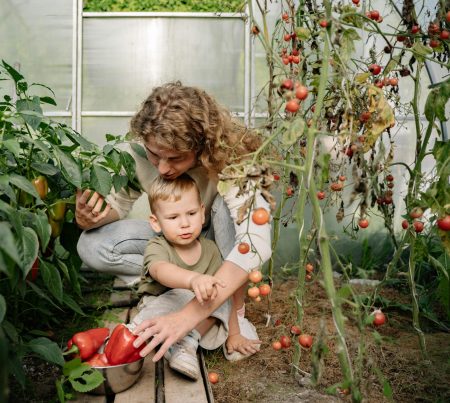
For growing indoors, herbs are a great example of plants that are easy to grow on a warm windowsill or in a conservatory, and it’ll give you a constant supply. If you’re a keen cook, year round herbs on demand will definitely save you some money.
12. Future proof your ‘free’ garden:
At the end of the season, you’ll be able to collect your own seeds for next year without spending a penny – this will definitely ensure that growing your own is cheaper than buying in the supermarkets.
You can also take cuttings from your plants, propagate new strawberry plants and fruit bushes from old ones, and make the most of things like new raspberry canes sprouting. Once your garden gets going, it’s so easy to keep moving forward and expanding what you have and produce without spending any money.
Don’t forget that you can also start growing from the food that you have in the fridge already too. Sprouting potatoes that are past their best can be planted, and my nan grows tomatoes each year simply by drying out the seeds from one tomato on a windowsill. I’ve even got an apricot tree growing in my garden that was started from a supermarket apricot stone – it’s three years old and doing well, so hopefully it’ll start to produce soon, it was worth a try! Keep on adding to your collection, and you’ll soon have a great kitchen garden.
13. Do some DIY pest control:
You’ll want to invest in some netting to keep the birds away from any fruit you’re growing – they love berries! But to deter slugs and snails, simple things like keeping the grass short, removing hiding places and creating barriers with twigs are freebie ways to keep them at bay. I’ve also found growing salad in a vertical planter really handy too.
If you do have a pest problem, pop outside with a torch of an evening to see what you can squash or pop into a bucket of water. Or, for a less time consuming option, put a pot of beer into the ground to create a DIY trap that will lure in the slugs.
14. Learn from the best:
The internet is such a valuable resource for just about everything so use google, youtube and gardening blogs to learn what you need to know. A great book for beginners is the RHS ‘Grow your own veg and fruit year planner’ – this book is a fantastic guide if you need some help on what to do and when, and it features literally every fruit and vegetable you can think of!
And, I absolutely love Huw Richards’ book ‘Grow food for free’ – it was on my Christmas list last year and I’ve found it so helpful! This one is an all-in-one guide to getting started with growing fruit and vegetables for beginners, whilst giving step-by-step guidance on how to save money and do it all for free.
Both books also explain about seed collection, and propagating new plants like fruit bushes – which as I mentioned above is really important for next year’s growing season. Plus, any extras that you produce will give you bits to swap when you go to local seed swaps.
Huw Richards and Sam Cooper have also just brought out a new book –
15. Sell what you grow:
If you manage to produce lots of seedlings, or produce an abundance of fruit and vegetables, then think about selling what you grow. This money could be put back into next year’s growing, and if you’re a keen gardener and you have the space it makes sense to make some extra cash on the side. Everyone loves homegrown fresh produce!
You could also barter too – if you grow different produce to your friends, family or neighbours then why not do some trading? Life is insanely expensive at the moment, so anywhere savings can be made will help you to reduce your food bills whilst feeding your family fresh, healthy food. Best of luck with your growing and let me know how you get on!
Looking to save money and adopt a more frugal family lifestyle? Check out these articles too:
How can I live a good life in the UK with little money? 25 tips for living a simple, frugal, minimalist lifestyle!
How to food shop on a small budget: 26 tips to save money on your weekly shopping bill (& a free printable meal planner!)
What is Olio? How to use the Olio app to stop waste, get free food (and more!) & reduce your shopping bill!

